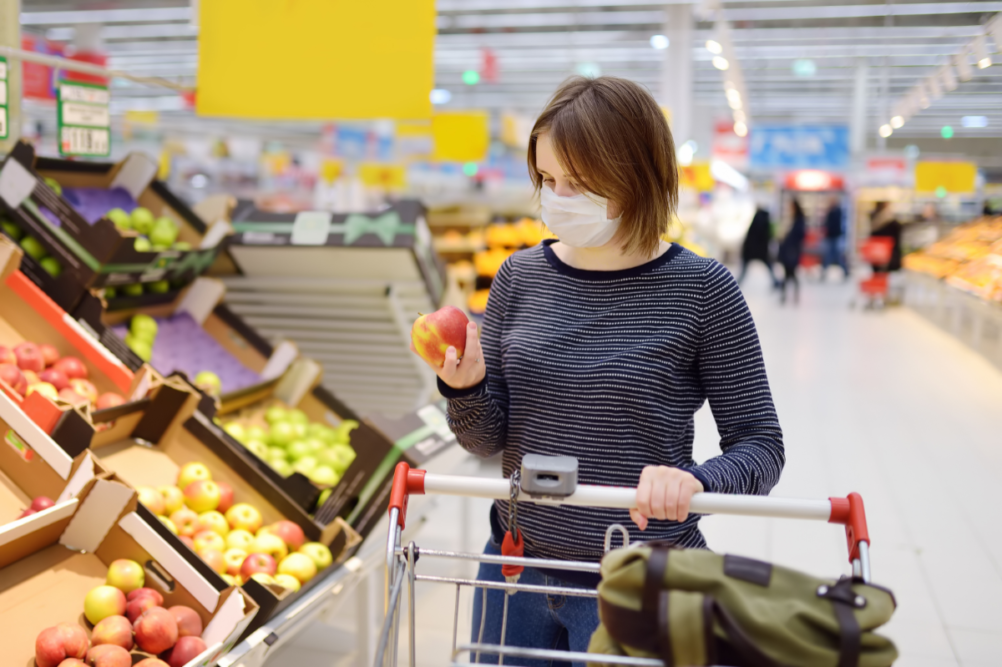COLUMBUS, OHIO – A new study from market research firm Illuminology and Inspire PR Group took a look at how coronavirus (COVID-19) has changed consumer behavior at the grocery store and how those behaviors may change or stay the same as stay-at-home orders begin lifting across the United States.
Over 1,200 Americans from across the country participated in the survey, which was fielded online from April 17-20. Respondents were asked about their grocery behaviors over the first two months of 2020 before COVID-19 hit, in April, when most states had stay-at-home orders put into effect, and what they anticipated their shopping behaviors to be like the first two months after stay-at-homes orders were lifted.
The study found that grocery behaviors have changed and will continue in the same path of health and safety concerns even after stay-at-home orders are lifted. US shoppers are most concerned about the perceived health threat posed by other customers over store employees.
Over 62% of respondents said they would like every employee to wear a face mask while 57% said they want to see every customer wearing a face mask. Fifty-seven percent also want plexiglass separating employees from customers and 56% want limits on how many customers are allowed in a store at one time.
“Shoppers clearly want to be protected from other shoppers,” said Orie Kristel of Illuminology. “I wonder if they’re assuming businesses are potentially liable for their employees to be healthy and safe. But they don’t have that similar kind of assumption for other customers.”
While the survey identified a surge in new customers for online pickup and delivery grocery ordering in April, it projects that online platforms will see significant declines back to similar pre-COVID-19 levels after restrictions are lifted.
Of recently acquired shoppers, more than one-third said they are unlikely to use online pickup when restrictions are lifted, while one half said they are unlikely to use online delivery. Eighty-two percent of survey respondents said that they will return to instore shopping while 26% said they would use online pickup and 23% said they will use online delivery.
Kristel said that survey respondents complained about the customer experience of online pickup and delivery, finding some online platforms difficult to navigate and the customer experience lacking overall.
“From this data there seems to be multiple opportunities for grocers to address some of the customer experience issues with online pickup and delivery,” said Kristel. “This might be something that should probably look at now considering what Dr. Fauci is saying that we are going to be living with COVID-19 for some time. If this does come back in the fall and we’re under stay-at-home again, there’s a six- to seven-month clock to get things right.”
Looking ahead to the rest of 2020, 50% of consumers plan to shop at the grocery store at least once a week, while 30% will shop every two weeks and 20% will shop once a month of less. Forty-seven percent of shoppers expect their spending patterns to go back to pre-COVID-19 levels, while 24% expect to spend a little more money and 13% expect to keep spending a lot more money.
The survey shows that COVID-19 has caused a lasting shift in purchase intentions. After stay-at-home orders are lifted, shoppers expect to stockpile extra non-perishables and other household supplies to prepare for another event like COVID-19. Forty-one percent said they were very likely to buy extra household items, 40% plan to extra nonperishable or processed foods, 70% are like to stock up on milk and 77% are likely to stock up on eggs.
“In terms of making the shoppers feel more comfortable, it’s really clear from this research that the multi-layer approach is the right one,” said Kristel. “There’s no single silver bullet here, there’s multiple small ones. Those customers want masks and plexiglass and all those things.”
The full findings of the study which also included restaurant projections and findings specific to Ohio can be found here.

